QuestionI have a 10 beautiful husky. He has always had a dry cracking nose atleast
as long as I can remember. Lately he has had somehat of a cold. Each night
I spend a few minutes cleaning is crusty nose. My question is his nose has
always been bumpy and crackled and dry but know I'm noticeing that half
that cracky bumpy mess he peeled. Any idea what this is from? Normal? A
good thing that those ugly bumps are going away? Thank you in advance for
your help
AnswerSam,
This is something that would worry me. Dogs can get a condition called pemphigus which is an auto-immune disease. Now I am not saying that is what he has but what you are describing fits the symptoms. It also fits other symptoms of other auto-immune diseases such as lupus. Have you ever had this looked at and evaluated by a veterinarian?
Since he is now very much a senior I think a thorough exam is in order here with special attention being paid to this condition on his nose.
Here is some reading for you on some of the conditions:
Pemphigus foliaceus is more common in dogs than in cats and horses but is still an uncommon disease. It is characterized clinically by erosions, ulcerations, and thick encrustations of the skin and mucocutaneous junctions. The absence of lesions in the mouth, and the widespread thick, crusty nature of the skin lesions, tend to differentiate pemphigus foliaceus from pemphigus vulgaris. Autoantibodies are present in the skin and react with intracellular cement substance. These autoantibodies cause a separation of the cornified from uncornified cell layers. High doses of glucocorticoids are used initially, but low-dose, alternate-day therapy is used once the disease is under control. More potent immunosuppressive drugs such as cyclophosphamide or azathioprine are used with glucocorticoids in cases unresponsive to steroids. Gold salts, in conjunction with low doses of glucocorticoids, are sometimes helpful in maintaining remission in animals in which steroids alone are ineffective. Animals that respond poorly to initial therapy, or require high dosages of drugs to control lesions, have a poor longterm prognosis
Pemphigus vulgaris is rarer than pemphigus foliaceus. It is characterized by bullous lesions along the mucocutaneous junctions of the mouth, anus, prepuce, and vulva, and in the oral cavity. Other areas of the skin are only mildly involved. Because the epidermis of animals is relatively thin (compared with human skin), the bullae rupture rapidly and form erosions; consequently, characteristic bullae are seldom seen. The bullae occur as a result of suprabasilar acantholysis. Secondary bacterial infection often complicates the lesions, and if untreated, the disorder is often fatal. It is treated with high doses of glucocorticoids alone or in combination with other drugs such as cyclophosphamide, azathioprine, or gold salts. The disease is difficult to maintain in remission, and the longterm prognosis is fair to poor.
Your best bet is to get this guy into the vets and have him looked over very soon.
Good luck and let me know what they find out.

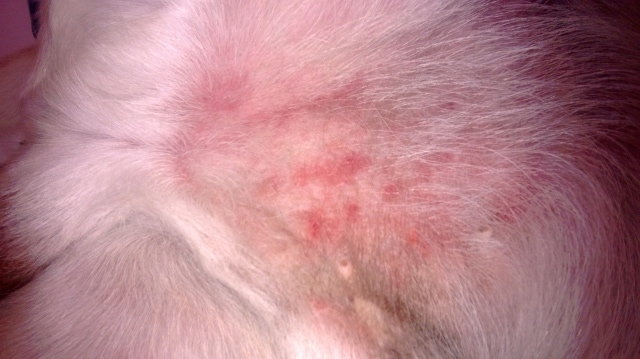 Red Rashes all over his body
Question
Red Rash Red Rash
My pet had red
Red Rashes all over his body
Question
Red Rash Red Rash
My pet had red
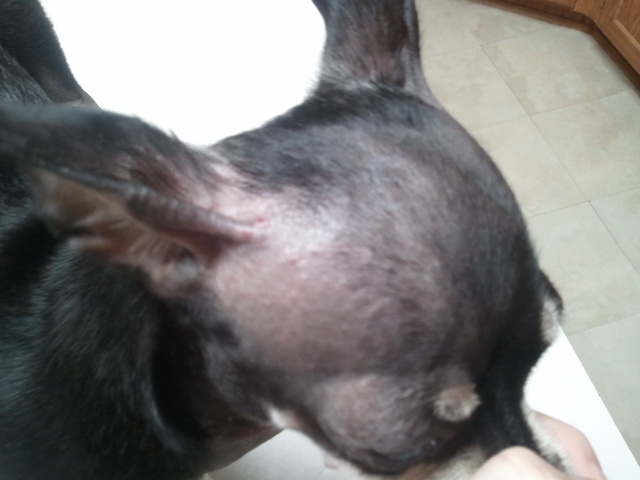 is it normal or is it mange?
Question
nemos skin
My 7 month old Chihuahua puppy, Nem
is it normal or is it mange?
Question
nemos skin
My 7 month old Chihuahua puppy, Nem
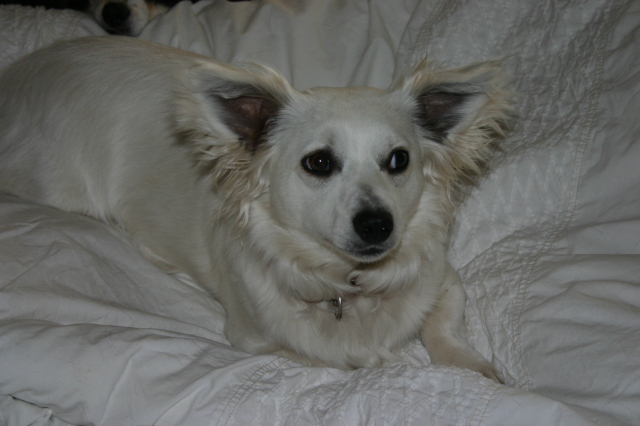 Sudden aggressive episode - reaction to cortisone therapy?
Question
Maddy - Tibetan Spanie
I have a Tibetan Spanie
Sudden aggressive episode - reaction to cortisone therapy?
Question
Maddy - Tibetan Spanie
I have a Tibetan Spanie
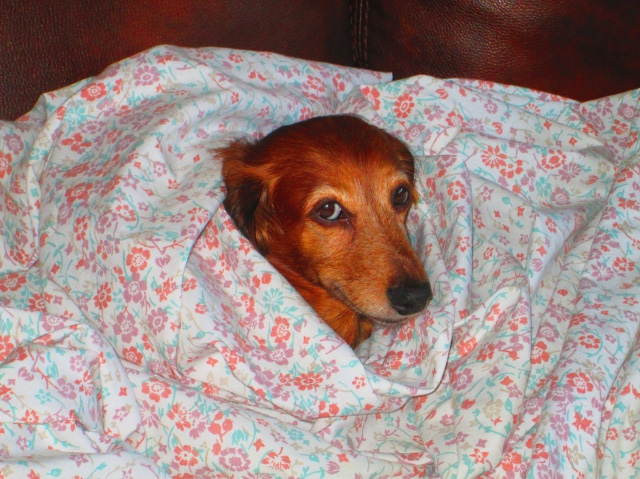 Dachshund yeast infection in ear-lameness
Question
Pearl
Hi! My 11 yr. old dachshund has a
Dachshund yeast infection in ear-lameness
Question
Pearl
Hi! My 11 yr. old dachshund has a
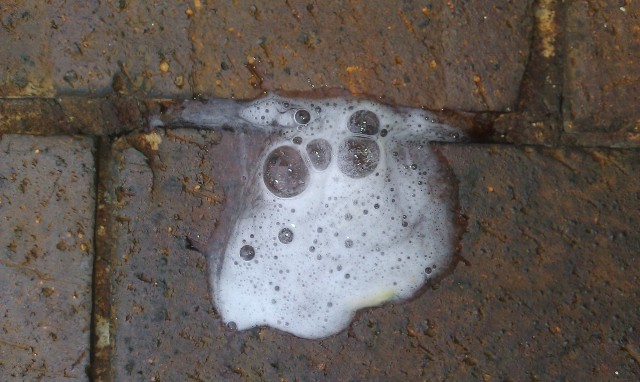 Vomiting and swollen neck glands
Question
Vomit
Hi
We have a 2 year old male, neutered M
Vomiting and swollen neck glands
Question
Vomit
Hi
We have a 2 year old male, neutered M